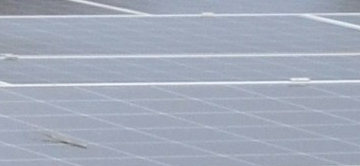Conflicts over the use of water have been a recurring issue in the history of mankind. Today's conflict between Ethiopia, Egypt and Sudan over the filling of the "Great Dam of the Ethiopian Renaissance" on the Nile is an opportunity to recall the economic particularities of water resources.
Water flows ... or not
Upstream, 110 million Ethiopians with a GDP per capita that places them 171st in the world. Downstream, 40 million Sudanese and 100 million Egyptians respectively in ranks 143 and 95. Between the two, 10 million tons of concrete to store 74 km3 of water capable of supplying 6450 MW of electricity.[1] With this installation, the cost of which is in the order of 5 billion US dollars, Ethiopia expects to catch up in terms of energy. However, the production of hydroelectricity depends on the head of the waterfall. For Ethiopia to be able to produce at full capacity, the dam must be filled as soon as possible. But Egypt, which is 90% dependent on the Nile for its water resources, argues that the km3 stored upstream will be badly needed downstream.
The originality of the problem posed here is that Egypt's water deficit should only be temporary, the time it takes to fill the Ethiopian reservoir. Later, the differences of interest will be more classic: the parties will have to agree on the rhythm and flow rate of water releases.
Private property, public property
Water resources stored in a dam have multiple uses that are not necessarily antagonistic. There is a real conflict of use when it comes to feeding cities or irrigating crops located in different places. For example, in India, when water from the Cauvery is used to meet the needs of the inhabitants of Bangalore (state of Karnataka), rice farmers in the state of Tamil Nadu, downstream from the river, protest that they are running out of water. They appeal to the "Treaty" signed under the supervision of the British colonial administration in 1924 which granted them much larger volumes than those allocated to Karnataka. In a case like this, the economic status of water is that of a "private good", i.e. a good whose consumption by one agent excludes that other agents can consume it. In terms of efficiency, cubic meters of water should be sold, for example at auction, to those who value it most. This raises two problems. First, there is a problem of equity: the poorest candidates will be excluded, which is socially unacceptable when it comes to a good such as water. The second problem is the implementation of the allocation rule. Upstream agents can easily circumvent the rule and take more than they are entitled to. In India, the Supreme Court's decision to open up the Karnataka reservoirs to supply rich farmers downstream caused riots among the 8.5m inhabitants of Bangalore in 2016, which were suppressed by massive police intervention (The Economist, 17 September 2016). Whenever the drafting and application of rules for the distribution of the resource requires the use of force, confrontation between independent states, such as those that want to appropriate the Nile's water, can lead to armed conflict ... unless an organization or third country can be found to guarantee compliance with an international agreement.
It should be noted that the problem of exclusive choice does not only arise in terms of scarcity. In the United States, the Corps of Engineers, which for two centuries has managed the network of dams, reservoirs, canals, dikes and hydroelectric installations of the main rivers, is regularly attacked by local residents whose land and homes are flooded to reduce the water pressure in overfilled dams (The New York Times, May 31, 2019). Conflicts are fortunately settled in the courts.
Now let's look at the situation where the water upstream passes through turbines to produce electricity. In this production, the water loses only its potential energy and remains available downstream for the irrigation of agricultural land and the supply of drinking water to the inhabitants of the valley. This complementarity makes water a "public good", i.e. its use by one agent does not exclude its use by others. There is no conflict between the hydropower company and the farmers and the value of the m3 of water is equal to the sum of the values given to it by all the consumers concerned. However, this static interpretation in terms of public good avoids an essential problem: that of the timing of upstream and downstream needs. For most uses, the valuation of water depends on the date on which it is available and on the state of nature prevailing at that date. For example, in our latitudes, water is much more valuable to a farmer in summer than in winter, whereas the reverse is true for a hydroelectric company. Similarly, the dates and states of nature in which water is used to offset low water levels and maintain biodiversity, those in which water is needed to cool thermal power stations and those in which flows must be regulated to avoid floods do not always coincide.
This is precisely where the problem with the Renaissance dam lies: there is complete disagreement between the three countries on its filling speed. Ethiopia wants to have all the electric power available as quickly as possible, which means filling the reservoir in less than six years, whereas Egypt requires a much longer period (at least 12 years), because of the drop in the Nile's flow that must be expected during filling. Stuck in between, Sudan is waiting to see what will come out of the confrontation but can be more accommodating to the hydropower project thanks to commitments to supply electricity to compensate for the inconveniences due to variations in the river's flow.
The troubled waters of the dam
Construction of the Renaissance Dam began in 2013 and is expected to be completed in 2022. The project was launched without consultation with downstream countries, without an environmental impact study, and the site was awarded to an Italian company without a call for tenders. These failures to meet the usual requirements of large construction sites explain why Ethiopia has been refused assistance from international financiers such as the World Bank. As it stands, apart from the financing of the electrical equipment by Chinese banks, the cost of the dam (15% of Ethiopia's GDP) is borne by a public loan from the Ethiopian state, as well as by cuts in the wages and salaries of civil servants. This financial self-sufficiency does not encourage altruism towards the other Nile countries.
To solve the filling problem, engineers, either independently or within an inter-state commission (National Independent Scientific Research Group), have worked out compromise solutions that seem reasonable, but this is without taking into account national pride and irreconcilable conceptions of borders, purely geographical for Ethiopia or defined in terms of living space, thus including upstream water resources, for Egypt. At the beginning of 2020, the intervention of the American administration advanced the discussions, particularly because Ethiopia agreed that the reservoir should be filled mainly during the rainy season, i.e. in July and August.
*
* *
Once the reservoir is filled and electricity production is regular, the private dimension of water (it is in the reservoir, it is therefore not in Egypt) should fade to be supplanted by its public dimension (the water goes through the turbines, then goes to irrigate the northern countries). There will obviously remain sources of dissension, especially if rainfall is not at the expected level and Ethiopia releases less water to replenish its reserves. But the management of the resource should be less conflictual, and the dam will contribute to the development of a region that has enough problems not to add to the risk of war.
[1] By way of comparison, the Aswan dam commissioned by Egypt in 1973 stores 169 km3 of water and has an installed capacity of 2100 MW.





